Echeveria Nodulosa (Painted Echeveria) Profile
Written by Iris
Nov 08 2021

Echeveria Nodulosa is a stunning Echeveria with deep wine markings on the edges and centers of olive green leaves. In summer, Echeveria Nodulosa produces clusters of pale yellow and orange bell-shaped flowers on tall spikes. Echeveria Nodulosa can grow to 5 inches wide and 2 feet tall.
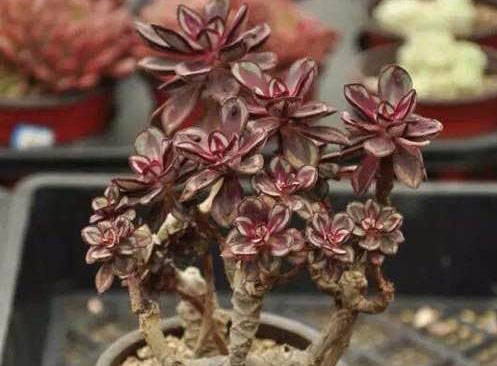
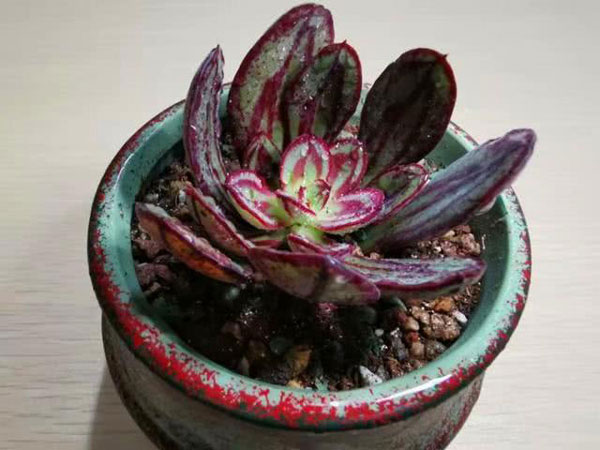
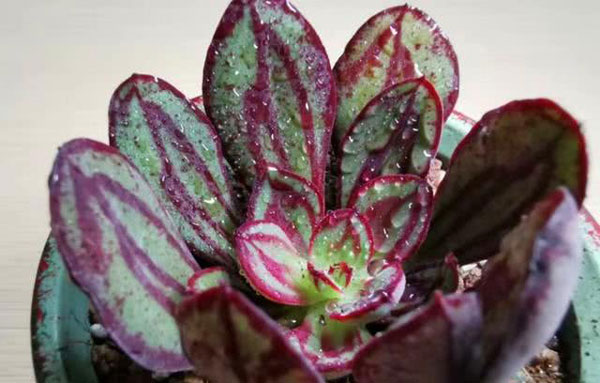
So to get started you will want to twist and pull away one or more offsets and set them aside for a few days to callus over.
The stronger the root formation already is the better.
Now prepare a container with some quality soil and once your offset has callused you can plant the roots directly into the soil with the offset sitting on top.
From here just water your Echeveria Nodulosa offset lightly or use a misting bottle whenever the soil has become dry and place the container in a spot where it gets plenty of indirect light.
After some weeks have passed, you will notice stronger roots have formed and you can ease into normal care.
Once you have chosen your stem you can take a sharp clean knife or quality garden shears to cut the stem away while keeping a few leaves towards the top of the stem and none towards the bottom.
Let the stem cutting dry and callus over for a few days.
Once the stem is dry you can plant the stem 2 inches into it's own high quality soil while making sure there are no leaves touching or under the soil.
Now place the container in indirect light and water lightly whenever the soil becomes dry.
Eventually roots will form under the soil and you can ease into normal care.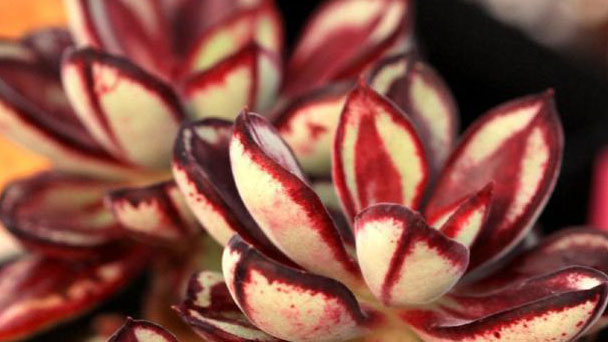
Temperature and Humidity Care
Echeveria Nodulosa needs a temperature of around 65° to 72° degrees Fahrenheit. Echeveria Nodulosa likes humidity of approximately 50%.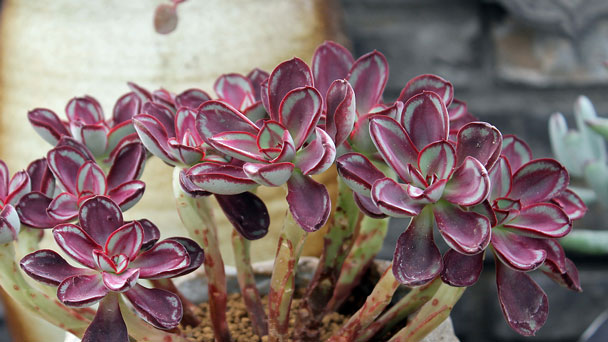
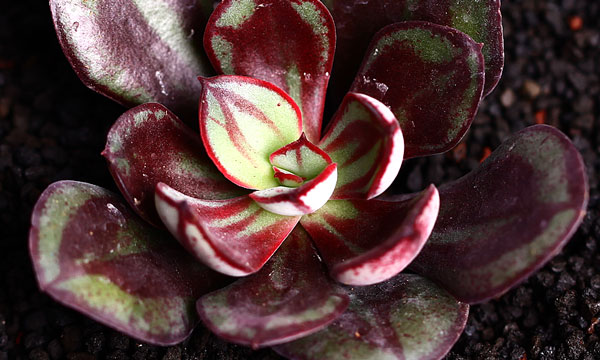
Mealybugs
Spider Mites
Aphids
Fungus Gnats
Mealybugs are one of the biggest threats to this type of succulent plant as they can quickly infest plants by sucking out all their sap.
Spider Mites also pose a significant threat because they feed on Echeveria Nodulosa 's leaves. They also spread various viruses, such as Red Spider Mite Virus (RPMV), which will cause spots or patches to appear on your plant, turning them brown.
Aphids suck up nutrients from young shoots, causing them to be stunted in growth. They also transmit the lace bugs, which can cause deformation on your plant.
Fungus Gnats are another pest you will want to watch out for because they lay their eggs in moist soil, and then when they hatch, these larvae start feeding on roots of plants, causing them to wilt or die.
If any of those pests above has invaded your Echeveria Nodulosa succulent plant, it is best to kill all egg masses, pupae, or even larva if possible using a strong jet stream from a water hose.You should also isolate infected plants away from other healthy ones and spray your plant down with insecticidal soap.
Read Next:
Echeveria Elegans Mexican Snowballs Care & Growing Guide
Echeveria Laui (Echeveria Succulent) Care Guide
Echeveria Agavoides Care & Propagation
Echeveria Pulvinata (Chenille Plant) Care & Propagation Guide
Echeveria Nodulosa (Painted Echeveria) Care Guide
Echeveria Imbricata (Blue Rose Echeveria) Grow & Care Guide
Echeveria Setosa: Grow & Care for Mexican Firecracker
Echeveria Black Prince Succulent Grow & Care Guide
Echeveria Runyonii Topsy Turvy Grow & Care Guide
Echeveria Takasago No Okina Care Guide
Echeveria Mebina Care Guide
Echeveria Nodulosa PictureEcheveria Nodulosa InfoEcheveria Nodulosa Native HabitsEcheveria Nodulosa DistributionHow to Grow & Care for Echeveria NodulosaHow to Grow Echeveria NodulosaHow to Care for Echeveria NodulosaUses of Echeveria NodulosaVarieties of Echeveria NodulosaEcheveria Nodulosa Common Pests/Diseases
Echeveria Nodulosa Picture

Echeveria Nodulosa Info
| Scientific Name | Echeveria Nodulosa |
| Common Name | Painted Echeveria |
| Hardiness | Amber Zone |
| Light Aspect | Part Shade, Full Sun, Full Sun Windowsill |
| Planting Location | Pot, Wall, Rockery, Garden, Windowsill, Conservatory |
| Mature Size | Small |
| Colour | Red, Green |
| Growth Form | Branching |
Echeveria Nodulosa Native Habits
The foliage and shape of Echeveria Nodulosa is what makes it so appealing. It has a red to burgundy primary color streaked within the leaves and around the margins. The rest of the foliage is a greenish color. The shape of the echeveria nodulosa leaves is uniquely longer than other Echeveria rosettes. Also, the leaves aren't as plump. It's almost like if Aeonium and Echeveria had a love child. At full maturity, this Echeveria nodulosa plant can get up to 8 inches tall, and about 9 inches wide. Expect a large, colorful plant in the right conditions. In the spring and summer months, Echeveria Nodulosa create an aggressively tall bloom. Echeveria Nodulosa is almost 1 foot tall. Echeveria Nodulosa is not one of the more beautiful blooms, but the pink or yellow bell-shaped flowers it produces looks great.
Echeveria Nodulosa Distribution
Echeveria Nodulosa comes from a wide range within central Mexico (Oaxaca to Puebla) where it typically grows on dry limestone hills. The genus Echeveria was named to honor Mexican botanical artist Atanasio Echeverría y Godoy in 1828 by the French botanist Augustin Pyramus de Candolle (DeCandolle) who was very impressed with Echeverría's drawings. Echeverría had accompanied the the Sessé and Mociño expedition (led by Martin de Sessé y Lacasta and Mariano Mociño Suárez de Figueroa) while exploring Mexico and northern Central America and had produced thousands of botanical illustrations. The genus Echeveria is a member of the large Crassula family (Crassulaceae), which has about 1,400 species in 33 genera with worldwide distribution. Echeveria, with approximately 180 species, are native to mid to higher elevations in the Americas with the main distribution in Mexico and central America but with one species found from as far north as southern Texas and several species occurring as far south as Bolivia, Peru and possibly Argentina.
How to Grow & Care for Echeveria Nodulosa
How to Grow Echeveria Nodulosa
- Propagate with Offsets
So to get started you will want to twist and pull away one or more offsets and set them aside for a few days to callus over.
The stronger the root formation already is the better.
Now prepare a container with some quality soil and once your offset has callused you can plant the roots directly into the soil with the offset sitting on top.
From here just water your Echeveria Nodulosa offset lightly or use a misting bottle whenever the soil has become dry and place the container in a spot where it gets plenty of indirect light.
After some weeks have passed, you will notice stronger roots have formed and you can ease into normal care.
- Propagate with Cuttings
Once you have chosen your stem you can take a sharp clean knife or quality garden shears to cut the stem away while keeping a few leaves towards the top of the stem and none towards the bottom.
Let the stem cutting dry and callus over for a few days.
Once the stem is dry you can plant the stem 2 inches into it's own high quality soil while making sure there are no leaves touching or under the soil.
Now place the container in indirect light and water lightly whenever the soil becomes dry.
Eventually roots will form under the soil and you can ease into normal care.
- Propagate with Leaves

How to Care for Echeveria Nodulosa
- Light Care
- Soil Care
- Water Care
Temperature and Humidity Care
Echeveria Nodulosa needs a temperature of around 65° to 72° degrees Fahrenheit. Echeveria Nodulosa likes humidity of approximately 50%.
- Fertilizer Care
- Pruning Care

Uses of Echeveria Nodulosa
Landscape Uses: This is a beautiful option for a garden plant or as companion plants with other succulents or a houseplant due to its attractive appearance and ability to attract hummingbirds for a lively looking garden.Varieties of Echeveria Nodulosa
There are many popular Echeveria, both species, and hybrids. In nature, Echeveria succulents are native to Mexico, the United States, and South America. Some of the more beautiful Echeveria include the blue Echeveria (E. glauca and E. laui), firecracker plant (E. setosa), painted lady (E. derenbergii), and E. agavoides.
Echeveria Nodulosa Common Pests/Diseases
Echeveria nodulosa succulent plant is vulnerable to some pests and diseases, including:Mealybugs
Spider Mites
Aphids
Fungus Gnats
Mealybugs are one of the biggest threats to this type of succulent plant as they can quickly infest plants by sucking out all their sap.
Spider Mites also pose a significant threat because they feed on Echeveria Nodulosa 's leaves. They also spread various viruses, such as Red Spider Mite Virus (RPMV), which will cause spots or patches to appear on your plant, turning them brown.
Aphids suck up nutrients from young shoots, causing them to be stunted in growth. They also transmit the lace bugs, which can cause deformation on your plant.
Fungus Gnats are another pest you will want to watch out for because they lay their eggs in moist soil, and then when they hatch, these larvae start feeding on roots of plants, causing them to wilt or die.
If any of those pests above has invaded your Echeveria Nodulosa succulent plant, it is best to kill all egg masses, pupae, or even larva if possible using a strong jet stream from a water hose.You should also isolate infected plants away from other healthy ones and spray your plant down with insecticidal soap.
Read Next:
Echeveria Elegans Mexican Snowballs Care & Growing Guide
Echeveria Laui (Echeveria Succulent) Care Guide
Echeveria Agavoides Care & Propagation
Echeveria Pulvinata (Chenille Plant) Care & Propagation Guide
Echeveria Nodulosa (Painted Echeveria) Care Guide
Echeveria Imbricata (Blue Rose Echeveria) Grow & Care Guide
Echeveria Setosa: Grow & Care for Mexican Firecracker
Echeveria Black Prince Succulent Grow & Care Guide
Echeveria Runyonii Topsy Turvy Grow & Care Guide
Echeveria Takasago No Okina Care Guide
Echeveria Mebina Care Guide
Latest Updated
- Benefits of Bugleweed - 7 Science-backed Health Benefits
- Bugleweed Dangers & Side Effects - Is It Poisonous?
- How to Plant Evergreen Trees - What You Should Know
- When to Plant Evergreens - Grow Guide for Evergreen Trees
- 12 Wonderful Evergreen Shrubs for Your Garden
- 12 Popular Evergreen Plants with Pictures for Beginners
- When And How To Prune A Lilac Bush Like a Pro
- How to Grow & Care for Lilac Vine (Hardenbergia Violacea)
- Japanese Lilac Tree (Syringa Reticulata) Care & Propagation Guide
- Shumard Oak Pros and Cons - What to Know
Popular Articles
- Winter maintenance of Antirrhinum Majus
- How to Grow Terminalia Mantaly Tree
- How to Grow and Care for Crossostephium Chinense
- How to grow Antirrhinum Majus in spring
- Peristeria Elata (Dove Orchid) Profile: Info & Care Guide
- Underwatered Snake Plant (Sansevieria Trifasciata) - Signs And How To Fix
- How to Care for Brazilian Jasmine Plant (Mandevilla Sanderi)
- How to Grow & Care for Graptopetalum Purple Delight in Summer
- Rosa Chinensis (China Rose): Plant Growing & Care Tips
- How to Care for Baby Sun Rose (Aptenia Cordifolia)